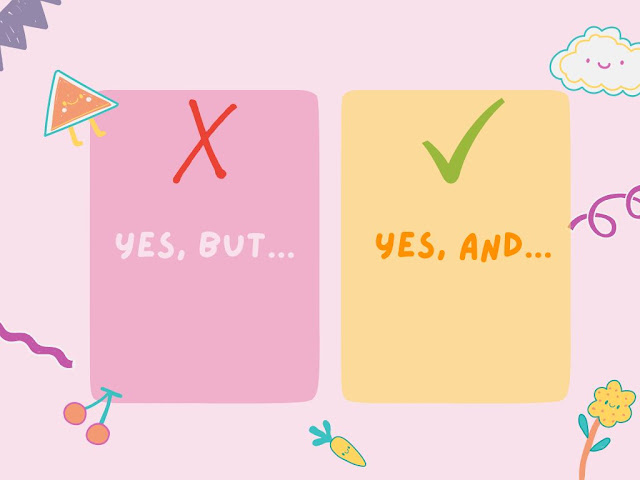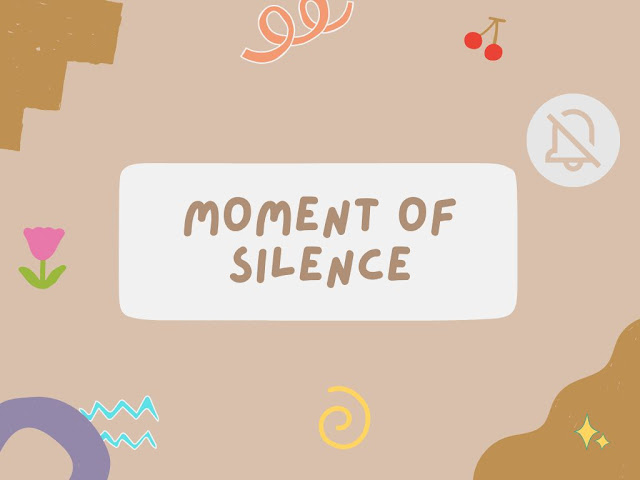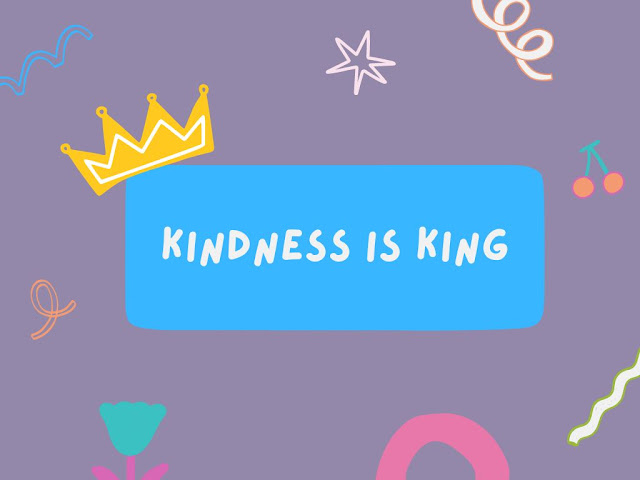A podcast of a controversial author had triggered a lot of people recently for many reasons -- which can all be summed up as belittling work-from-home employees and business owners, instead of properly addressing a major problem in this digital age:
Developing a collaborative culture and human connection
Here are some of the things I've learned from my own experiences in real life, as well as in MMO games and reading Webtoon -- don't laugh -- followed by 7 practical actions one can easily apply to develop that elusive collaborative culture in any group.
After reflecting on what I enjoyed and hated in the teams I've been in (ones I've worked under a leader, ones I've managed myself, and ones where it's decentralized), and experienced being on either side of the fence: being exasperated over a disengaged and uncooperative member, and being THE 'problematic' member myself -- I've realized a lot of things.
First of all, do we even need to develop a collaborative culture at work or in school to get things done?
Advertisement - Continue Reading Below
Actually, no.
But why do people aim for it -- from the top management to the HR, to the reporting group at school, and even to that clan in an MMORPG?
- to encourage people to contribute their own ideas and solutions, especially those that haven't been brought up yet in the group
- to have a pleasant experience working on a project or group of tasks, regardless of who is assigned to work closely together -- and easily reduce any friction among team members
- to build a network of people one knows they can rely on and tap into in the future if ever the need arises
- to provide equal opportunities to people based on merit and without any prejudice on their background and other divisive factors not really relevant in getting things done in a team
These are just some of the usual reasons why a collaborative culture is sought after in groups, but the most important reason of all is giving everyone a chance to actually enjoy working together and get things done as timely as possible, instead of dreading waking up and facing the whole ordeal of doing the tasks on hand, and encourage procrastination.
 |
| Work hard, party hard whether in reality or virtually. |
It's all about the mindset game.
A. The 3 Blind Spots About Collaboration
Let's call it 3 wise kings turned 3 blind mice. Some people think they're the common sense solution. They are to some degree.
Eventually, I realized that oftentimes they're overrated and simply not always necessary.
Let's discuss why they're not.
Advertisement - Continue Reading Below
I. Face-to-Face
Forcing people to regularly come to the office (or meet in a classroom), isn't the solution.
Worse, doing so may quickly escalate into power-tripping and bullying especially when the one suggesting it is coming from a privileged position and out of touch with the common plight of the majority in the team.
I was in a (relatively) lucky position back when I was still working for a company because I just live near the office (not near enough to walk, but near enough to afford taking quick cabs daily). I didn't have to drive, worry about finding a parking space (we're actually given a free slot if we choose to bring our car but only for certain days of the week), or wait in a very long line to commute (I did the last one often years ago when I was merely starting out).
Just because people are in the same building or room doesn't automatically make anyone care for each other especially if they get distracted a lot during working (or studying) hours.
 |
| I never experienced working in an open floor plan, but I don't wanna imagine this nightmare. |
Effective virtual groups are enough to debunk the idea that we need to be face-to-face or physically present in order to work well together.
People who employ and those who work as virtual assistants for example can attest to the efficacy of a work-from-home setup even prior to the pandemic. Early adopters of WFH setup like some IT and business professionals will agree that meeting in a virtual environment is enough.
 |
| Fireside Chat with Philip Rosedale and Adam Frisby about Metaverse |
Most of the criticisms about metaverse in general (not only Zucc's FB) point to the importance of face-to-face like it's a prerequisite for people to be cooperative and collaborative when really it's just one of the many ways we interact with each other.
Face-to-face interaction doesn't automatically make people feel connected and collaborative with each other. It's all about what people do and how they interact that matters -- regardless of their chosen mode of interaction.
You can be surrounded by a lot of people, yet feel alone and lonely.
You can be drinking milk tea or coffee alone at home, yet feel so cherished by people online.
I remember how tight-knit some groups or clans in MMO games can be too (and it's mind-blowing really!) -- and no, it isn't either because we have a common enemy in a game we enjoy.
 |
| Life After camp by mother of cat (I can't for the life of me find my own photos anymore when I used to be addicted back then in this game lol) |
I experienced being in a fun anime-loving clan in another MMO called Dragon Raja that suddenly merged into one of the top 10 clans on our server.
After the merge, it all went downhill from there.
And that leads us to the next point.
II. Competition
Fun, friendly competition that aims to promote camaraderie is ok.
But the kind that forces team members to secure the top by resorting to verbal abuse, elitism, and other cheeky manipulative tactics -- instead of say, inspiring the team members with a great (mostly secret) strategy and properly communicating how to execute it -- is the fastest way for anyone to become disengaged.
If not quit.
 |
| Pyramid Game - The "Happy" Class |
I don't see the point of being at the "top" but having shitty character and miserable life in general because in reality they're trapped by what people around them expect them to do -- also known as The Gifted Child problem.
I remember dropping this webcomic in Webtoon titled Pyramid Game because every character there seems to be in that low-vibe highly competitive survival mode.
 |
| Pyramid Game - Suji analyzing the main antagonist |
I regret torturing myself with this (and worse, feeding and encouraging my subconscious mind to be in that defensive survival state like the characters there -- we really need to be always careful of the media we consume!) until I realized it illustrates different examples of what NOT to do.
Here's one called Fox Club. I initially ignored it because I thought it's yet another 'Mean Girls'-themed webcomic. But unlike Pyramid Game, the main leads (who are BFFs) show the readers how trust and genuine connection lead to good win-win collaborations that payoff well -- at least up to the episodes I've read so far as of this writing
 |
| The Fox Club - Not all people at the "top" are bad and toxic. |
Fox Club isn't all goody-goody though. It also shows how things can backfire if we're not sincere in working together at all.
 |
| The Fox Club - New Friends or Hidden Nemesis? |
III. Cooperation
Previously I've confused and easily interchange cooperation and collaboration -- and mistakenly assumed that having a good grasp of the former automatically leads to the latter.
That isn't always the case. According to nira.com:
Cooperation - tells someone why we need to work together. It's all about defining the vision of the leader (if it's a centralized team), or the common goals of the individuals in a team (if decentralized).Collaboration - tells someone how we work together as smoothly and efficiently (and fun!) as much as possible. It's all about helping individuals connect and nurture good relations among each other.
The former is easy. The latter -- very tricky.
But not impossible.
Cooperation is needed to address the "what's in it for me".
Let's call it the bare minimum.
And we definitely need more than that to have a genuine cohesive group -- which now brings us to the following.
B. 7 Effective Ways to Develop a Collaborative Culture
This list isn't exhaustive, but just some examples of practical actions anyone can easily apply to one's team. These are the ones I use myself (or keep reminding myself when I forget) and have seen to work well.
But feel free to add more practical examples in the comments section below.
1. Yes, and...

This one I learned from one of the recent posts of Charlotte, MSc Psych of @themindfriend. When someone in the team is sharing an idea or solution:
Instead of saying "Yes, but..." try "Yes, and..." - Charlotte, MScPsych
A lot of us are guilty of using "Yes, but..." and it subconsciously sets a very dismissive tone even if that isn't our intention.
Despite the "Yes", the "but" part signals that we're being critical and ready to challenge the idea right away.
This can lead to unnecessary debates, getting stuck on a problem, and eventually disengagement.
It's like punishing someone for trying their best to share -- which shouldn't be the case.
We need to reward them instead.
"Yes, and..." signals acknowledgment and inclusion, and encourages people to open up and share their ideas and solutions with the team more.
It's also a way of telling someone that we're all in this together, which sets a more collaborative tone.
Best Used:
- encourage shy team members to share their own ideas and insights and feel heard by the team
- the team needs to weigh different options -- and creative ideas may prove helpful
- the idea presented is ok, and just needs a little tweaking
Avoid If:
- avoid using it if you totally oppose the idea, but allow the presenter to finish explaining their side first and don't interrupt
- after everyone is done presenting the idea, that's the best time to share your point of view, but instead of saying "Yes, but..." try "I respectfully disagree because..." or "We can agree to disagree..."
- avoid using "Yes, and..." followed by a sarcastic joke, unless you're already very close with the person and they're very aware of the kind of sense of humor you have
2. <insert someone's action> made me feel...

I remember in most relationship advice columns, they warn people to avoid saying "You always..." (or its variation "You never...") to their partner and even to other members of their family.
This advice can also be applied in both casual and professional settings among colleagues.
Using "you always..." and "you never..." is very accusatory and judgemental, and only makes the other party feel constantly attacked and belittled.
Depending on the personalities of the team members, either everyone will start feeling like they're constantly walking on eggshells -- including the one who uses "you always..." and "you never..." -- or worse, things can suddenly escalate into an actual fight.
Instead of saying "you always..." and "you never..." try opening up to the other person how their certain actions made you feel.
Doing so targets the actual problem, especially a certain potential bad habit that the other person couldn't help doing but isn't their intention to hurt others.
Instead of escalating the situation with more ad hominem attacks, start sharing how certain actions of that person made you feel.
This signals to the other person that despite the pain, you still do your best to show some trust by revealing this (very normal and human) vulnerable side, which then invites them to actually listen and reflect on their actions, instead of feeling defensive and stonewalling you off the bat.
Best Used:
- in most social situations where misunderstandings are common
- to yourself when talking in front of the mirror
- to someone you care for deeply
- in private
Avoid If:
- the other person is a sociopath, psychopath, or has some other form of mental issues
- in crime-related situations -- save your energy and don't even bother. Let the professionals handle things instead and focus on your healing.
- with a person or situation where you need to finally set strong boundaries and cut all forms of communication (i.e. ex who cheated, fake friends/frenemies)
- in public or in front of many people, or else the other person will think that you're only trying to gain sympathy from others and embarrass that person more
Advertisement - Continue Reading Below
3. The Magic of Tips

Unless it's something you've sworn secrecy or confidentiality with another party, openly sharing information is the fastest way to build rapport with a new member, and establish trust among existing team members.
Everyone loves tips!
This can be in the form of fun trivia or a useful guide relevant to your team and industry.
Have fun freely sharing tips with others, but never pressure them to do the same.
They can do so only if they want to, or at the level of comfort they want and at their own pace.
This encourages them to trust you and feel that you're not a threat.
Best Used:
- during your team's downtime, and you have nothing else better to do
- you want a new member and the rest of the team to feel comfortable with each other
- someone directly asks you for advice
- while your immediate boss is away
Avoid If/Alternatives:
- avoid doing this and interrupting your team out of the blue while they're busy
- avoid this too when someone is sharing their problems. Oftentimes, that person only wants to be heard and comforted, and giving unsolicited advice will only annoy them.
- in the presence of an immediate boss who might either feel like you're trying to suck up to them or worse, feel threatened and mistake it as trying to take their position and authority away from them -- unless people actually directly come to you for help instead
4. Moment of Silence

There are special instances, such as someone in the team experiencing a loss, or a few people having personal disagreements with each other that have really nothing to do with what you do as a team.
In situations like these, it's best not to side with anyone.
Let them deal with those issues on their own (maybe subtly remind them of points number 1 and 2 above). Never meddle, and just stay neutral and silent.
Just because you're silent doesn't mean you don't care.
You're silent because you want to listen to them more and be a comforting presence to them.
Only listen and acknowledge what they say, but never use this as an excuse to talk about others negatively behind their backs, and add fuel to the fire.
If this worsens, it leads to a divided team and an us-against-them attitude.
Not good.
This is highly challenging because most of us have the tendency to not only agree with the person complaining or ranting but also add our own negative experiences with the person they're talking about.
There's a saying that if we have nothing good to say, silence is best.
If you catch yourself chiming in the negativity, make it a point to ask for advice about how you can safely confront the person you're talking about behind their back, and resolve all those issues as peacefully and amicably as possible.
You may also incorporate this fun exercise in your next team-building activity:
Tell everyone in your team to prepare a sheet of paper and stick it to each person's back.
Take turns writing something positive or something to be grateful about that person on the paper behind their back.
Do this until everyone has finished writing on each person's back, and then give everyone time to read what people have written on the paper taped behind their back.
Closely monitor anyone trying to bully or gang up on someone with either direct negativity or passive-aggressive comment, and talk to them in private after the session.
Best Used:
- one or a few team members have personal issues they need to deal with that aren't related to what the team does
- one or few team members need a comforting presence and someone who will listen to them
- you have nothing good to say
Avoid If/Alternative:
- the issues are directly related to your team
- people have started becoming downright passive-aggressive, or worse, shouting at each other in your team -- best to talk with them directly but do so privately
- the personal issues and overall situation seem to have gotten worse and it comes to a point that it already endangers the general safety of a member or your team as a whole -- it's best to let the management and any other proper authorities be aware too instead of remaining silent
5. Kindness is King

It's disturbing how, in the quest for pushing different agendas on people and proving who's right, a lot of us forget the most important thing of all:
Kindness.
Although I don't subscribe to most of Sadghuru's teachings lately, his old stuff still resonates with me and one of them is this:
"There are no good people and bad people. Everybody is oscillating between the two... There are only joyful and miserable people. The moment we think we are good, we are entitled to destroy the bad." -- Sadghuru
This is why following this old corporate code of never talking about the following is still gold:
- politics
- religion
- race
- age
- gender
- body
Not only siding with one tends to alienate the other. More often than not, doing so simply promotes hatred instead of love, chaos instead of peace.
We all walk our own paths and have our own lessons to learn. As long as we're not causing mayhem and destruction lol, we all have the freedom and right to choose what we want to do in life.
People are born with different backgrounds, circumstances, and experiences. Forcing someone to change their beliefs and values overnight without considering their upbringing and making the effort to be in their shoes first usually only leads to senseless unproductive debates.
We're free to pursue and act on (non-radical/non-extremist) advocacies we resonate with in private, or in rare exceptional circumstances, in public if it's say, closely part of your team or company's mission and social responsibility.
The key here is act.
So as much as possible, just avoid talking about those bulleted topics above not only in professional settings but also among family, friends, and even online.
If someone presses you for your own opinion, either follow point #4 above or briefly share your side but always remember:
It's always better to be kind than to be 'right'.
Best Used:
- anywhere, anytime
Avoid If:
- need to defend oneself first from immediate danger and physical harm
6. The Mafia Code

Whatever's talked about behind closed doors should remain behind closed doors. No one in a group (more so if you treat each other as a family) should be breaking each other's trust.
It goes beyond the rule of not snitching and also not talking behind someone's back. Outsiders should only be "informed" if it involves a piece of crucial information that directly impacts their decision-making.
Privacy go hand-in-hand with security and trust.
Open-book culture has become more and more pervasive, not only among celebrities and influencers but also among the majority of us.
Although sharing ones lessons and experiences with others is highly appreciated, and for some, even makes them more relatable and approachable, we need to be careful that we don't overshare information that risks compromising the privacy of the people we care about.
This isn't only about typical info that may compromise their safety (i.e. full name, location, number, schedule), but also those involving their own personal relationships, health matters, and other things they consider too sensitive to be shared with the public.
Best Used:
- always
- if pressed by someone without any right to do so, ask "Why do you need that info?" then immediately change the topic (or lie lol)
- against social media
Avoid If:
- legally compelled to give out certain information requested about someone (i.e. court proceedings, legal guardian)
7. IKEA Effect

IKEA is a popular home depot that originates in Sweden. It's home to many DIY furniture almost anyone can assemble and other home projects we can easily undertake over a weekend.
Usually, when we do such projects ourselves, we take more pride and feeling of accomplishment than if we simply got them all ready in our homes which is done to us by a contractor and interior decorator -- regardless if both achieve the same result.
The IKEA effect drives us to put more value and attachment on something just because it required some effort from us.
We can use the IKEA effect in our groups by asking for everyone's help and active participation to solve a problem, and by making them handle their responsibilities themselves.
It's almost similar to the Ben Franklin effect which is useful in transforming an enemy into a friend -- or at least someone who doesn't like you that much to someone who starts to agree with you.
If someone doesn't like you or hates you, ask them a favor to do something for you (usually haters are just frustrated fans anyway. There's a saying that the opposite of love or like isn't hate, but apathy).
Best Used:
- when someone in the group tends to criticize a lot (but lacks actually doing something on their own)
- when someone has a tendency to micromanage
- need to appease the majority
Avoid If:
- cases where someone's mastery or specialization is more important
Advertisement - Continue Reading Below
These are just some great ways to encourage people in a group to not simply co-exist peacefully but also to actually start enjoying working together, regardless if some don't see eye-to-eye on personal stuff that's beyond what can be tackled and resolved by the group itself.
If practiced regularly, any work or meeting setup is effective and productive.
Disclaimer: these only serve as generalized guidelines and pointers to minimize, if not avoid, unnecessary issues and drama that affect the overall productivity of a team, and don't cover special cases (i.e. emergencies, bankruptcies, etc.) where actual professional help is required.
Featured photo is OpenMic by Sansar team -- for illustrative purposes only about good example of collaboration. Other photos from Sansar, Sinespace, Pyramid Game and Fox Club belong to their respective owners and merely used here under fair use for editorial purposes only.











No comments:
Post a Comment